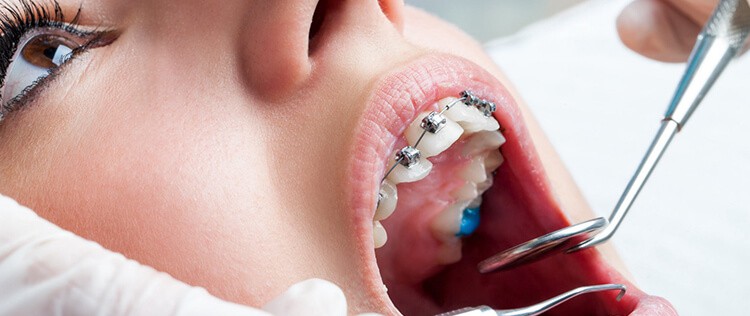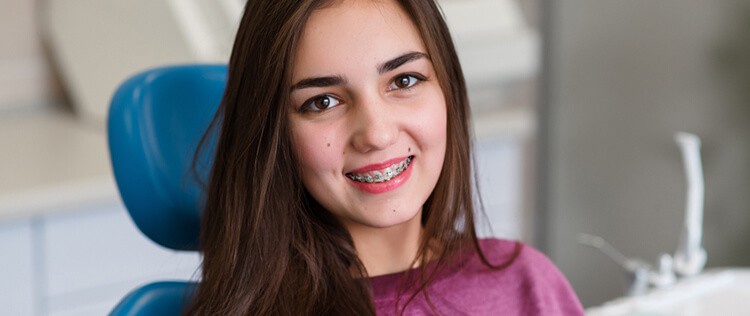Why should youngsters receive orthodontic treatment?
Adolescence is a process in human life that starts at the age of 12-13 and ends at the age of 18-20. This time period is the period in which the human face changes and develops the most. In order for this change to progress positively on the face, the necessary treatment should be taken, if any
For this reason, it is important to treat orthodontic problems caused by factors such as wisdom teeth in childhood or adolescence at these ages.
-
What are the disadvantages of not receiving orthodontic treatment during adolescence?
If orthodontic intervention has not been taken until adolescence, orthodontic treatment can be taken at later ages. However, since the period in which orthodontic intervention gives rapid and effective results, the treatment process may be longer, and treatment options may be reduced as the bones settle in later ages. Bone disorders can be resolved with orthodontic interventions before the facial development is completed. But if the facial development is completed, possible problems may require surgical intervention. Therefore, if there is a skeletal disorder, the procedure should be done during adolescence without the need for surgical intervention. Focus should be placed on solving the problem quickly and effectively with orthodontic approaches.
Bone disorders can be resolved with orthodontic interventions before the facial development is completed. But if the facial development is completed, possible problems may require surgical intervention. Therefore, if there is a skeletal disorder, the procedure should be done during adolescence without the need for surgical intervention. Focus should be placed on solving the problem quickly and effectively with orthodontic approaches.
-
What Causes Orthodontic Treatment In Adolescence?
For example: Incorrectly positioned upper incisors may contact the lower jaw prematurely, suppressing the development of the lower jaw. Problems that can be treated easily with previous interventions can cause bigger problems if left to advancing ages.
Wisdom teeth are the third and last molars located at the end of the tooth sequence in the upper and lower jaws. They appear in the 17-25 age range and generally at a late age. It’s like the late teens and early twenties. For this reason, they are called wisdom teeth or third molars. Partially erupted or crooked wisdom teeth may push other teeth and cause orthodontic problems. Since they are the last permanent teeth to erupt, there may not be a space in the mouth for these teeth to fit. They can cause pain, inflammation, and disease. Teeth can remain impacted.
If wisdom teeth are impacted, they may cause swelling, tenderness or inflammation around the third molar. Wisdom teeth, which are partially erupted and partially impacted, can push the other teeth and form a crooked shape. Residues of food may remain in the half-impacted tooth. Due to the sensitive tissue, there may be pain, inflammation, swelling and infection in the impacted area. Again, impacted wisdom teeth can cause cyst formation, which can be more dangerous if untreated.
Since they are later included in the oral structure, their stay or withdrawal in the mouth is determined by the guidance of the dentist after examinations. 20-year-old teeth can have different results in the mouth because they erupt late. They can cause orthodontic problems and can result in problems for adolescents because they are usually painful.
-
Why Do Youngsters Prefer Orthodontic Treatment?
Youngsters are the age group who apply for orthodontic treatment the most. Adolescence is the period when physical appearance and social acceptance are most important. This is the period when people care the most about how they look from the outside.
A Ages where the most investment in physical appearance is spent and the most time spent on personal care. During this period, youngsters care a lot about how they are perceived. They try to strengthen communication in social environments. The most used and studied detail when communicating is the human face.
The young person who is not satisfied with his face cannot communicate easily. If there is a flaw in the face, the offending or judgmental style such as criticism, sarcasm, and ridicule from the environment affects young people extremely negatively. Youngsters who think that they do not have an aesthetic smile cannot smile easily. Those who think that they have a bad appearance in the teeth or jaw structure cannot move comfortably. They prefer to keep their mouths shut while having a photo shot.
They cover their mouths with their hands while speaking. Of course, the most important thing is that they do not feel well, so they cannot take a self-confident stance. Orthodontic problems affect the physical appearance negatively. Young people resort to treatment due to aesthetic concerns or orthodontic problems that decrease their quality of life. Orthodontic treatment is preferred by young people in order to both have a better appearance and live healthier.
How Confident Are You About the Health of Your Teeth?
-
What are the Advantages of Getting Orthodontic Treatment at a Young Age?
After treatment, it becomes easier to maintain oral hygiene. Since the alignment of the teeth is smooth, there are no tooth surfaces that are stuck or that can cause bacteria formation, so the teeth can be cleaned thoroughly. Tooth decays, gingival problems, dental plaques are reduced.
Different health problems that may occur in the future can be prevented. In the orthodontic treatment process, the importance of oral hygiene is understood more. Young people receiving treatment often brush their teeth and pay more attention to their care. Since tooth cleaning is the factor that affects the course of treatment in orthodontic treatment.
Young people who pay attention to this during the treatment gain the habit of effective tooth brushing. After the treatment, they have a healthy and aesthetic appearance with clean and white teeth, light pink gums, and smooth teeth lined up like pearls. Orthodontic treatment is quite common among young people today. Therefore, wearing braces as before is not seen as an unusual situation. Young people give each other information about dentistry and treatment and support each other.
Self-confidence increases in young people as appearance improves in the period when physical appearance is most important. The young man who used to cover his mouth while laughing, who did not want to give a front profile in the photos, who could not smile, is replaced by a young man who speaks comfortably, expresses himself better, smiles and poses.
Having a smooth, symmetrical and proportionate appearance contributes to the self-confidence of the person. After the dynamism of the youth has been fermented with self-confidence, there is no success that the adolescent cannot achieve by working. Health is the most important gain in life. Having an aesthetic and healthy mouth structure, the young person will have a stronger stance physiologically and psychologically.


